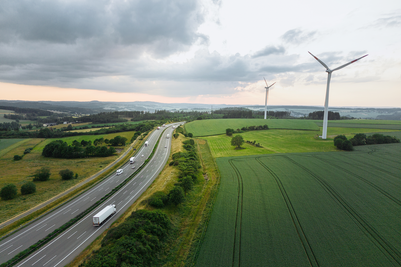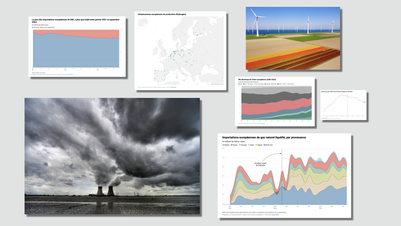article-en
October 30, 2025
“Fuel Cell Technology Have Surpassed Thermal Engine”: Recent Advances Reinforce the Case for Hydrogen Mobility
An interview with Sae Hoon Kim, engineer, leader of Hyundai’s hydrogen strategy and Head of Fuel Cell Development for 20 years.

In this interview, Sae Hoon Kim shares his insights and analysis on the latest breakthroughs in fuel cell technology, including developments recently showcased by Toyota’s R&D teams at the Hannover Fair.
Sae Hoon Kim served as Executive Vice President and Head of the Fuel Cell Center at Hyundai Motor Group for nearly two decades, spearheading the company’s global strategy and innovation in hydrogen fuel cell technology. As a key architect of Hyundai’s “Fuel Cell Vision 2030,” he has played a pivotal role in establishing the group’s leadership in zero-emission mobility—driving progress from the groundbreaking ix35 Fuel Cell SUV to applications in heavy-duty trucks and marine propulsion systems. With over 20 years of experience in fuel cell development, Sae Hoon Kim is recognized as a thought leader in the hydrogen economy, shaping Hyundai’s ambition to position hydrogen as a cornerstone of the future energy ecosystem. Hyundai Motor was among the first global manufacturers to commercialize hydrogen fuel cell vehicles, launching the world’s first fuel cell SUV in 2013. Since then, the technology has continued to evolve—gaining in efficiency, scalability, and application potential—thanks to the versatility of the hydrogen molecule and the ongoing innovation of dedicated engineering teams.
Hy24: Dr. Kim, you recently mentioned being impressed by Toyota’s latest announcements. What exactly surprised you?
Dr. Sae Hoon Kim (SHK): It wasn’t actually at the Hannover Fair, but earlier this year at the Fuel Cell Expo in Japan. Toyota announced their new fuel cell system just a week before the event, and they showcased it there. I was honestly very surprised—because I’ve long had some skepticism about whether fuel cells could truly match or outperform internal combustion engines, especially in terms of power density and durability.
Hy24: But people often say fuel cells have better efficiency—around 60%—compared to thermal engines, which barely reach 25% on average.
SHK: That’s true. Even Hyundai’s fuel cell system already reached 60% efficiency. But the challenge wasn’t just efficiency—it was about volumetric and gravimetric power density. Generally, fuel cells are inferior to the engines in the sense of volumetric power density and the engineers had difficulty putting in the fuel cell system in the conventional engine room. Even when the fuel cell system is matched to the engine room, it could only provide less power than conventional engine cars. What Toyota has done now is double the power density compared to their previous generation—the Mirai 2. Same volume, twice the output. That means going from 120–140 kW to around 240 kW in the same size package.
Hy24: That’s a huge jump. And what about durability?
SHK: Even more surprising. They say they've doubled the durability compared to the Mirai 2, which is already incredibly robust. If you look at the fuel cell taxis in Paris, they just don’t die. Toyota claims the new system now reaches diesel-engine levels of durability. That’s a big deal—diesel engines are considered industry benchmarks for longevity. So now we have a fuel cell system that is potentially smaller than an engine, more efficient, and equally durable.
Hy24: And we’ve heard they’re now operating at higher temperatures too?
SHK: That part hasn’t been officially confirmed by Toyota, but many engineers—including myself—are speculating that they’ve significantly raised their operating temperature. The clue is in the coolant pump: it’s not larger, despite the higher output, which likely means they’ve reached a coolant temperature of around 105°C. That aligns with Japan’s NEDO 2030 target. For reference, thermal engines typically can operate up to 110°C. This opens deployment in hot climates and high-load conditions that used to be problematic for fuel cells.
Hy24: If we summarize: fuel cells now have better efficiency, power density, and durability than combustion engines. That's a major breakthrough.
SHK: It is. Technically speaking, fuel cells have now surpassed engines on all key fronts. And there's still headroom. If you look at the 2035 and 2040 targets from NEDO, there’s room for even higher efficiency—up to 80% in the long term. With these performance levels, if volume scales up, cost will come down.
Hy24: But the competition today is not so much the engine—it’s the battery.
SHK: I agree. But based on my own cost modeling, I believe fuel cells—including hydrogen storage—can become cheaper than batteries at moderate production volumes. Let’s say around 100,000 units per year per manufacturer. We're not there yet, but it’s within reach.
Hy24: Of course, infrastructure is a bottleneck.
SHK: Yes, infrastructure is critical and still uneven. Korea currently has about 300 hydrogen refueling stations, Japan around 190, and China close to 400. But the U.S. network is shrinking, and Europe is still lagging. All of Asia combined holds 90% of global stations.
Hy24: So, fuel cell tech is ready, but global deployment is fragmented.
SHK: Exactly. What I emphasized in my recent talk is that we need to look at the full hydrogen value chain. In the past, fuel cell companies focused on the stack, electrolyzer firms on the electrolyzer—but that’s not enough. We need integrated solutions: production, storage, distribution, and end use must be considered together. That’s why companies that produce and consume their own hydrogen—like those in mining or heavy industry—are starting to succeed.
Hy24: Beyond mobility, what about stationary or maritime applications?
SHK: Maritime is crucial. Just to give a sense of scale: one hydrogen-powered ship may need up to 800 tons of hydrogen* per trip (including hydrogen-based fuels ammonia and methanol). That dwarfs any land application. By 2050, we estimate marine hydrogen demand alone could reach over 1,000 megatons annually. Regulations like IMO’s new emission targets will push that forward. But fuel cells are likely the only viable long-term solution for clean propulsion at sea.
Hy24: Do you believe onboard cracking of ammonia into hydrogen is realistic?
SHK: Cracking is technically possible and perhaps inevitable for ocean-going vessels. Direct ammonia fuel cells still face serious challenges, especially SOFCs which suffer from nitriding issues. I wrote a 50-page report on why that path doesn’t work yet. But cracking ammonia into hydrogen onboard, then using it in PEM fuel cells—that’s a viable direction. It's already being tested.
Hy24: Do you see hydrogen and hydrogen-based fuels as the most promising solutions for maritime propulsion?
SHK: While fossil fuels combined with onboard carbon capture (OCC) may play a transitional role in the maritime sector, I believe hydrogen-based fuels are ultimately the only viable long-term solution to reach net zero by 2050. The challenge with OCC is fundamental: capturing, liquefying, and storing CO₂ onboard requires a significant amount of additional energy. Beyond that, it would necessitate developing large-scale CO₂ infrastructure — including transport and storage facilities — at virtually every major port worldwide. In my view, that level of complexity makes OCC impractical as a long-term global solution. By contrast, hydrogen-based fuels, whether in the form of ammonia, methanol, or direct hydrogen applications, are scalable, increasingly cost-competitive, and fully aligned with the IMO’s decarbonization trajectory. For these reasons, they represent the most realistic pathway for the future of maritime propulsion and for ensuring the sector contributes meaningfully to the broader energy transition.
Hy24: And back on cost—do you still believe the material costs of fuel cells can stay competitive?
SHK: Definitely. I’ve once calculated the raw material cost of a 100 kW fuel cell system with a 6 kg hydrogen tank. It’s about $4,000. That’s already affordable—much cheaper than most people expect but the manufacturing cost is still high due to low volume. With thinner membranes, less platinum, no humidifiers, and better catalysts, we’ve made huge progress on cost. But the production volume is critical. With the current progress in the technology, I guess fuel cell is finally ready to be produced in high volume.
Hy24: You’ve been working on fuel cells for more than 20 years. Are we finally reaching the turning point?
SHK: Technologically, yes. This is the most exciting time in my career. Every five years, power density and durability are doubling. Toyota has now pulled ahead, but other OEMs will catch up within three to five years. What we need now is policy, infrastructure, and investment to scale. Especially in regions like Europe, which have strong regulatory frameworks but lagging hydrogen deployment.
Hy24: When do you expect fuel cells to really compete on mass market terms?
SHK: Between 2028 and 2030. That’s when the combination of technology maturity, regulatory pressure, and infrastructure development could create a tipping point—for both transportation and stationary applications. And once maritime regulations kick in after 2028, hydrogen demand will explode. We need to prepare now—for ports, shipping routes, production and transport infrastructure. The technology is ready. What’s missing is the global coordination.
Copyright: Quentin Hoyaux

Report: Hydrogen Internal Combustion Engines in Europe’s Road Mobility Decarbonisation
The development of this report was led by members of the H2Accelerate collaboration which has been formed by major players from the fuel supply and trucking industries to work together to accelerate the deployment of hydrogen - powered trucking in Europe.
More about

Innovating to finance the hydrogen economy
On the road to a more sustainable economy, we need more investment in sustainable assets. These investments must not only be supported by appropriate regulatory frameworks, but also encouraged and facilitated by financial mechanisms.
More about

Energy Europe – From integration to power
Europe is fragile. It's a fact: it will never have total energy independence. How can we take advantage of this situation? Pierre-Etienne Franc, co-founder and CEO of Hy24, proposes to turn a weakness into a strength - to the benefit of the Union's industrial and foreign policies.
More about
